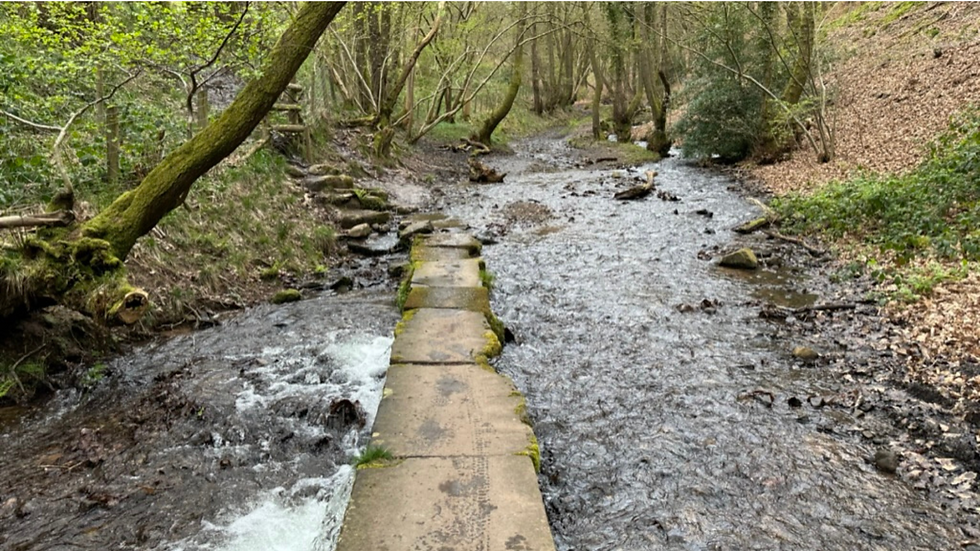How Healthy Are Our Rivers? Citizen Science in the UK
- Ceris Van de Vyver

- Aug 29
- 4 min read

Have you ever stopped on a bridge, looked down at the river below, and thought, It looks fine? On the surface, many of our rivers appear calm, clear and full of life. Yet beneath that shimmering surface, the truth is far less reassuring. Across the UK, our waterways are facing pressures they have never experienced before, and their health is far from where it should be.
At CV Water Consultancy, we work with water companies, regulators, consultants and environmental groups to educate, support and challenge ways to improve the way we monitor and manage water quality. But the question of river health is not just one for scientists or policymakers. Local communities, anglers, wild swimmers, schools and even casual walkers all have a vital role to play. This article explores the current state of our rivers, what makes a waterway truly healthy, and how citizen science can help turn the tide.
The Troubled State of UK Rivers
The numbers tell a sobering story. Not a single river in England currently meets the standard for “good” chemical status, and only 14 per cent have achieved “good” ecological status. The Rivers Trust’s State of Our Rivers 2024 report goes even further, stating that there is no stretch of river in England or Northern Ireland that can be considered in good overall health.
Several culprits lie behind this decline. Sewage pollution is one of the most high-profile issues, with storm overflows designed to release untreated or partially treated waste into rivers during heavy rain. In 2021 alone, England and Wales recorded over 470,000 such discharges — the equivalent of 3.5 million hours of pollution flowing into our waterways.
Agricultural run-off is another major factor. When it rains, fertilisers, pesticides and animal waste are washed from farmland and catchments into rivers. These nutrients such as phosphates can trigger excessive algal growth, a process known as eutrophication, which depletes oxygen in the water and suffocates aquatic life.
Then there is the so-called “chemical cocktail” of pollutants: heavy metals, microplastics, pharmaceutical residues and hormone-disrupting chemicals that enter rivers from urban run-off, industrial processes and even domestic wastewater. Some of these substances can have long-lasting effects, interfering with fish reproduction and may harm entire ecosystems.
The consequences are visible and severe. Sensitive species such as the Atlantic salmon are in decline, biodiversity is shrinking, and some rivers have become unsafe for recreation. This is not only an environmental problem but also a matter of public health.
What Makes a River Truly Healthy?
A river can look sparkling and inviting while hiding a very different reality. The real test of river health often lies in its smallest inhabitants — aquatic macroinvertebrates. These tiny creatures, such as insect larvae, snails and freshwater shrimps, live on the riverbed and act as nature’s “canaries in the coal mine.”
Different species have different tolerances to pollution. Mayfly nymphs and stonefly larvae can only thrive in clean, well-oxygenated water, whereas aquatic worms and midge larvae can survive in much more polluted conditions. Because they tend to stay in one place and cannot escape sudden pollution events, macroinvertebrates reveal the river’s long-term condition far better than a single water sample could.
They are not merely indicators, however — they are an essential part of the food web, feeding fish, birds and other wildlife. When these sensitive invertebrates decline, it is an early warning sign that the whole river ecosystem is under threat.
How Citizen Science is Making a Difference
The good news is that you do not need a laboratory or a scientific background to help monitor the health of your local river. Across the UK, citizen science projects are giving volunteers the skills and tools to collect reliable environmental data.
One of the best-known initiatives is the Riverfly Partnership’s Anglers’ Riverfly Monitoring Initiative (ARMI). Volunteers are trained to take samples from the riverbed using a kick-sampling net, identify invertebrates into key groups, and record their findings. If the results drop below a set threshold, the Environment Agency is alerted so that pollution can be investigated quickly. This simple yet powerful approach has uncovered pollution incidents that might otherwise have gone completely unnoticed.
Citizen science works best when community-led monitoring is supported by professional expertise and robust methodology. By combining local knowledge with scientific rigour, we can turn raw data into meaningful action, influencing policy, guiding restoration work and ultimately improving the health of our rivers.
Be Part of the Solution
The question “how healthy is our river?” cannot be answered with a single measurement or one-off survey. It requires consistent monitoring, shared expertise and cooperation between communities, scientists and policymakers. Citizen science offers a direct way for anyone, from seasoned anglers to weekend walkers, to make a tangible difference.
You could start by simply visiting your local river and paying attention to the wildlife you see. From there, consider joining a monitoring group such as ARMI, where you can learn to identify the species that call your river home and record their presence over time.
At CV Water Consultancy, we believe that the combination of sound science, high-quality training and strong community engagement is the key to restoring the UK’s rivers. With a shared commitment, we can bring our waterways back to life — cleaner, healthier and more resilient for future generations.
Every river matters. And so does every person who cares for it.




Comments